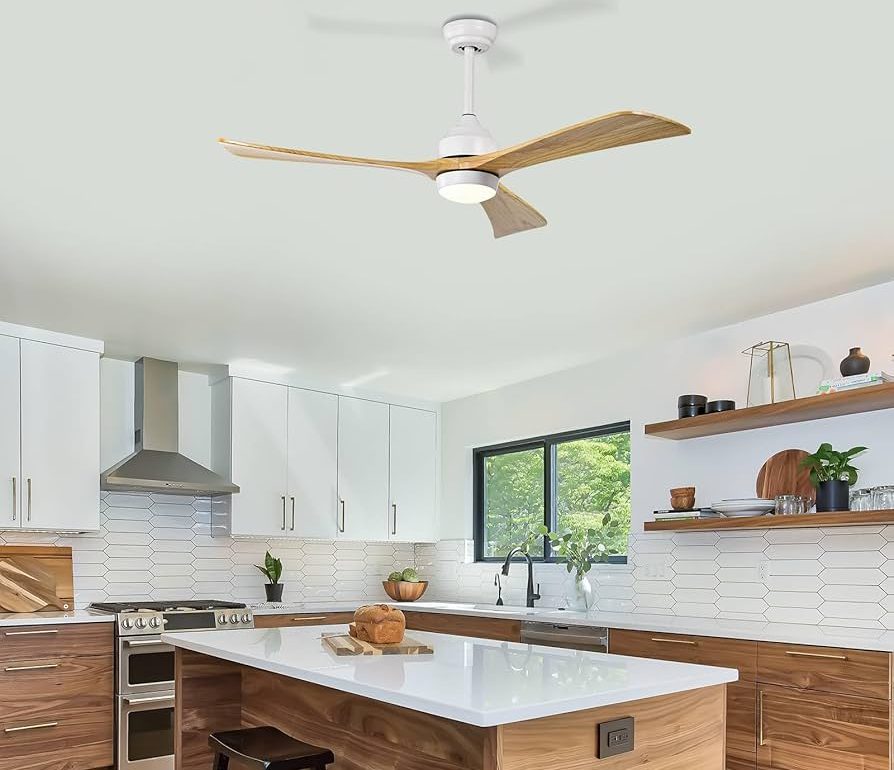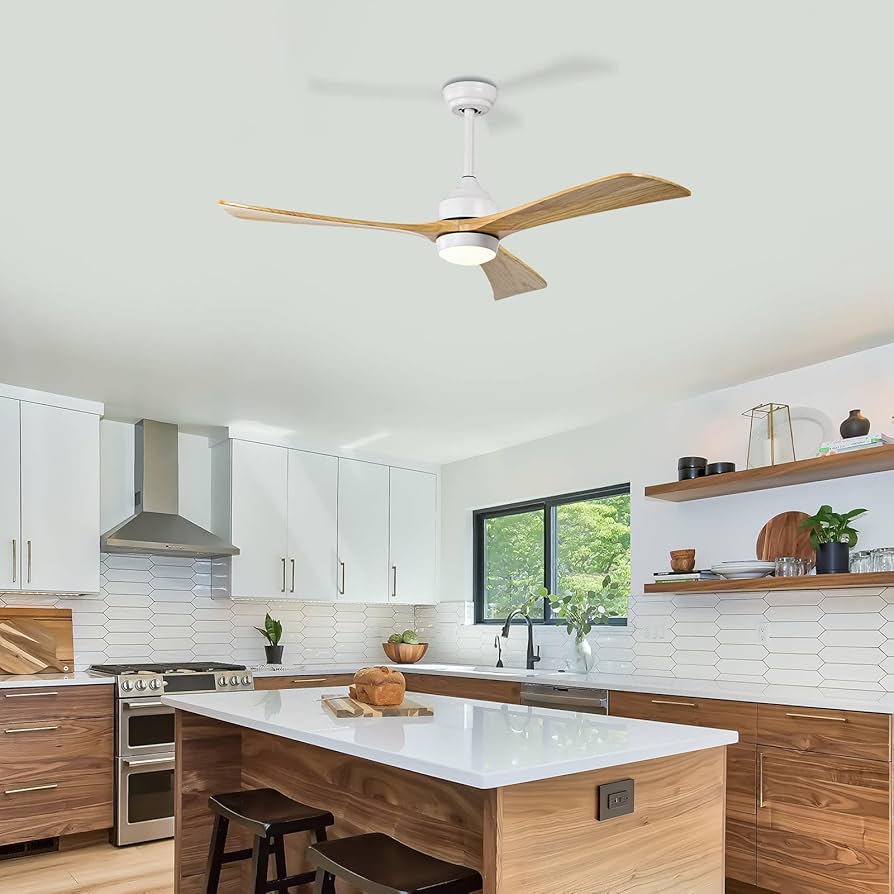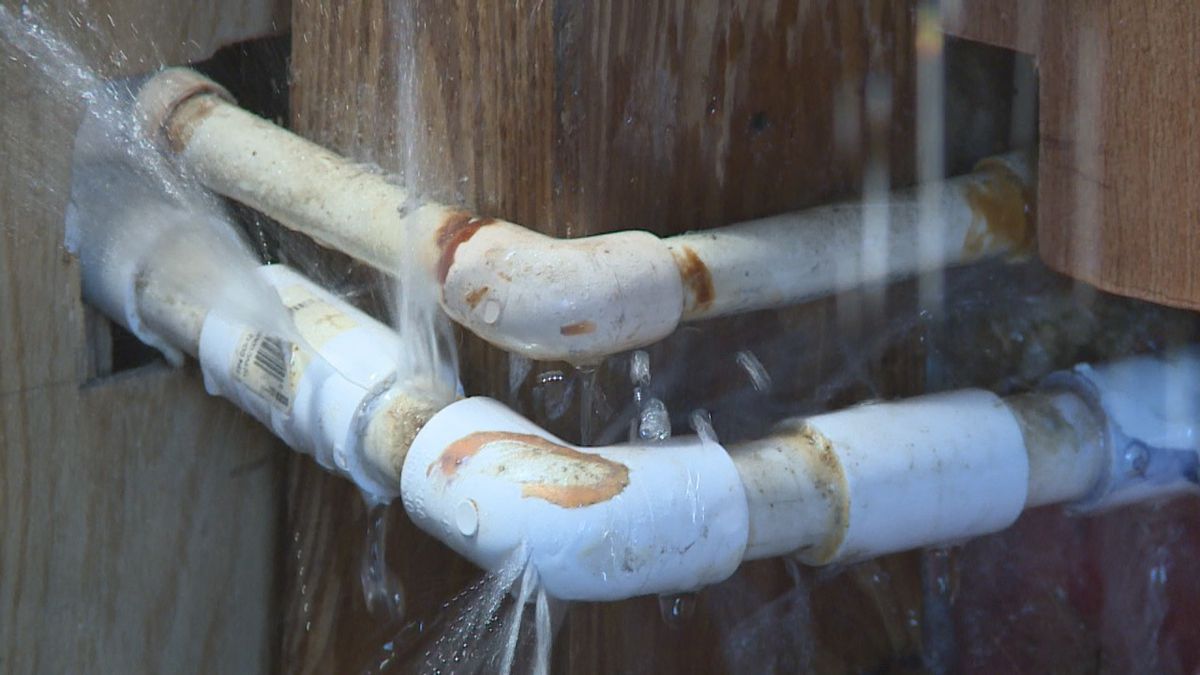Preventing Moisture Damage Through Ceiling Fans in Your Kitchen

Moisture buildup in the kitchen can lead to mold, odors, and structural damage, here’s how to prevent it!

The kitchen serves as the heart of most homes, where families gather to prepare meals, share conversations, and create lasting memories! However, this high-activity space also generates significant amounts of moisture through cooking, dishwashing, and daily food preparation activities. Without proper ventilation, this excess humidity can lead to serious moisture damage that affects both your home’s structure and your family’s health. Installing and maintaining an effective ceiling fan here can serve as your first line of defense against these potentially costly problems.
Understanding Kitchen Moisture Sources
Every kitchen produces moisture through various daily activities. Steam rises from boiling water, simmering sauces, and hot beverages. Dishwashing, whether by hand or through dishwasher operation, releases significant amounts of water vapor into the air. Even seemingly minor activities like washing fruits and vegetables or cleaning countertops contribute to the overall humidity levels in your kitchen space.
When this moisture accumulates without proper ventilation, it creates an environment where condensation forms on cooler surfaces like windows, walls, and ceilings. Over time, this persistent moisture can penetrate building materials, leading to wood rot, paint peeling, wallpaper bubbling, and the development of mold and mildew colonies that pose health risks to your family.
The Role of Ceiling Fans in Moisture Control
A properly installed ceiling fan here serves multiple functions beyond simply moving air around your kitchen. The continuous air circulation helps prevent moisture from settling on surfaces by maintaining consistent airflow patterns throughout the space. This movement disrupts the formation of stagnant air pockets where humidity typically concentrates, effectively distributing moisture more evenly and encouraging faster evaporation.
The strategic placement of a ceiling fan creates what ventilation experts call a “mixing effect,” where humid air near cooking surfaces gets blended with drier air from other areas of the room. This process reduces localized humidity spikes that often occur around stoves, sinks, and other moisture-producing appliances. Additionally, the air movement generated by the fan helps accelerate the natural evaporation process, preventing condensation from forming on walls, cabinets, and other surfaces.
Choosing the Right Ceiling Fan for Your Kitchen
Selecting an appropriate ceiling fan for kitchen use requires careful consideration of several factors that differ from standard room applications. Kitchen environments present unique challenges including grease particles, temperature fluctuations, and higher humidity levels that standard residential fans may not handle effectively.
Look for ceiling fans specifically rated for kitchen use or damp locations, as these units feature enhanced moisture resistance and materials designed to withstand the challenging kitchen environment. The fan motor should include sealed bearings and corrosion-resistant components that can handle the combination of heat, moisture, and airborne particles common in cooking areas.
Size considerations play a crucial role in effectiveness. A ceiling fan here should provide adequate coverage for your kitchen’s square footage without overwhelming the space or interfering with cabinet doors, lighting fixtures, or cooking activities. Most kitchen spaces benefit from fans ranging from 42 to 52 inches in diameter, though smaller galley kitchens may require more compact options while large open-concept kitchen areas might need larger models or multiple units.
Optimal Placement and Installation Considerations
Proper positioning maximizes your ceiling fan’s moisture control capabilities while ensuring safe operation in your cooking space. The ideal location balances effective air circulation with practical considerations like adequate clearance from cooking surfaces, sufficient headroom for tall family members, and appropriate distance from heat sources.
Installing a ceiling fan here requires careful attention to local building codes and safety requirements specific to kitchen environments. Most jurisdictions require minimum clearances from cooking surfaces and specific electrical considerations for areas exposed to moisture and heat. Professional installation ensures compliance with these requirements while guaranteeing optimal performance and safety.
Consider the relationship between your ceiling fan and other ventilation systems in your kitchen. While a ceiling fan provides excellent general air circulation, it should complement rather than replace dedicated exhaust fans over cooking surfaces. The combination of targeted exhaust ventilation and general air circulation creates a comprehensive moisture management system.
Operating Strategies for Maximum Effectiveness
Understanding how to operate your ceiling fan strategically enhances its moisture control capabilities throughout different cooking activities and seasonal conditions. During active cooking periods, running the fan at higher speeds helps immediately disperse steam and heat while preventing moisture accumulation around cooking areas.
The direction of fan rotation significantly impacts its effectiveness in moisture control. During warmer months, operating the fan in a counterclockwise direction creates a downdraft that provides cooling while promoting air circulation. In cooler seasons, reversing the direction to clockwise helps distribute warm air that has risen to the ceiling, maintaining comfortable temperatures while continuing to circulate air and prevent moisture stagnation.
Timing considerations also play an important role in moisture prevention. Running your ceiling fan here for extended periods after cooking activities helps ensure complete moisture dispersal even after visible steam has dissipated. Many homeowners find that continuing fan operation for 15 to 30 minutes after cooking completion effectively prevents residual humidity from settling on surfaces.
Maintenance Requirements for Optimal Performance
Regular maintenance ensures your kitchen ceiling fan continues providing effective moisture control while extending its operational lifespan. Kitchen environments expose fans to grease, dust, and moisture that can accumulate on blades and motor housings, reducing efficiency and potentially causing mechanical problems.
Cleaning should occur more frequently than fans in other rooms due to the challenging kitchen environment. Monthly blade cleaning removes grease and dust buildup that can impede air movement and create imbalanced operation. Use appropriate cleaning solutions that cut through grease while being safe for fan materials and finishes.
Motor maintenance includes periodic lubrication if required by your fan model, checking mounting hardware for looseness due to vibration, and inspecting electrical connections for signs of corrosion or wear. These proactive steps prevent performance degradation and identify potential problems before they result in fan failure or safety hazards.
Long-term Benefits and Cost Considerations
Investing in proper kitchen ventilation through a quality ceiling fan provides substantial long-term benefits that far exceed the initial installation costs. Preventing moisture damage protects your kitchen’s structural integrity, preserves cabinet finishes, and maintains healthy indoor air quality that benefits your family’s wellbeing.
The energy efficiency of modern ceiling fans makes them cost-effective solutions for continuous moisture control. Operating costs remain minimal compared to the potential expenses associated with moisture damage repairs, mold remediation, or premature replacement of kitchen materials and appliances affected by excess humidity.
A well-maintained ceiling fan here becomes an integral part of your kitchen’s infrastructure, providing years of reliable moisture control while contributing to the overall comfort and functionality of your cooking space. This proactive approach to moisture management represents a wise investment in your home’s long-term value and your family’s daily comfort.








